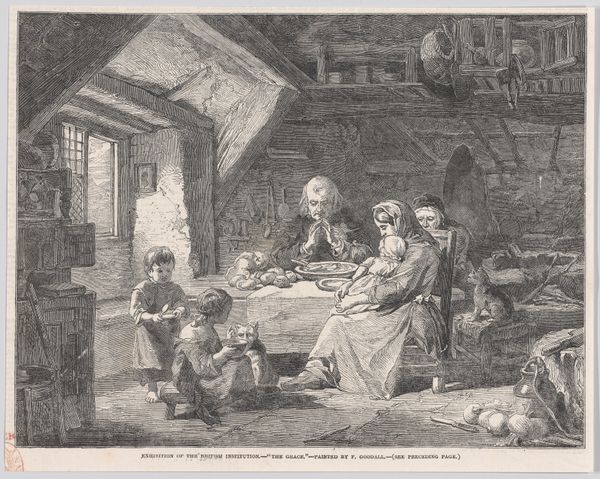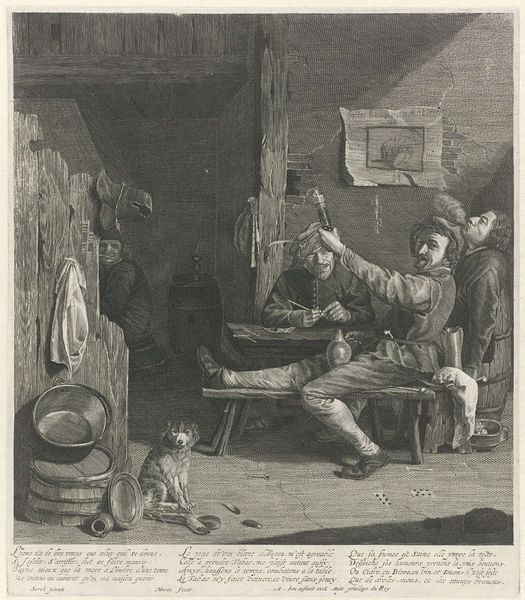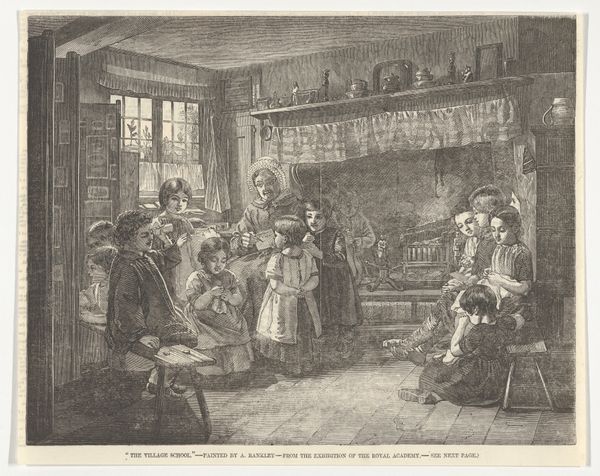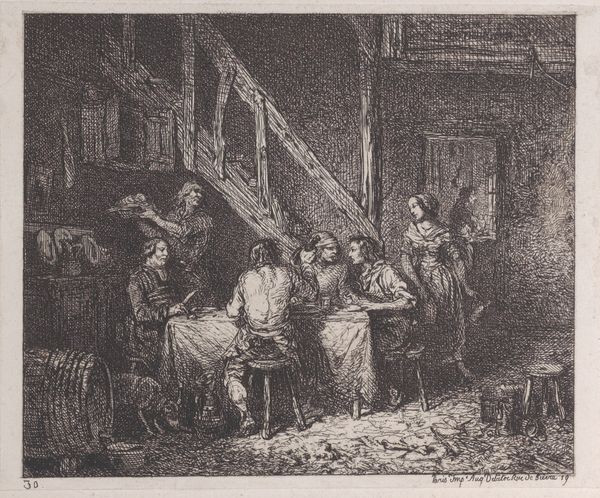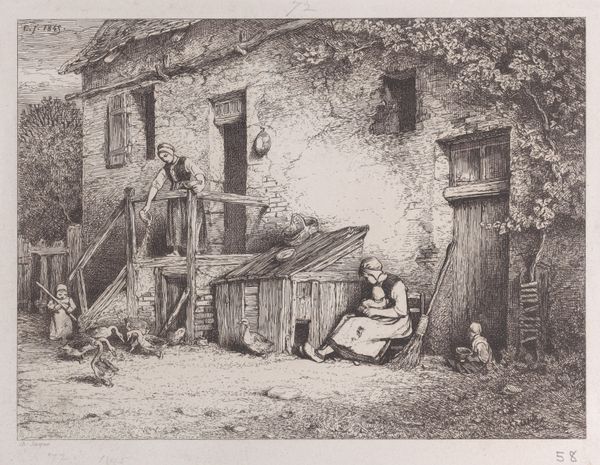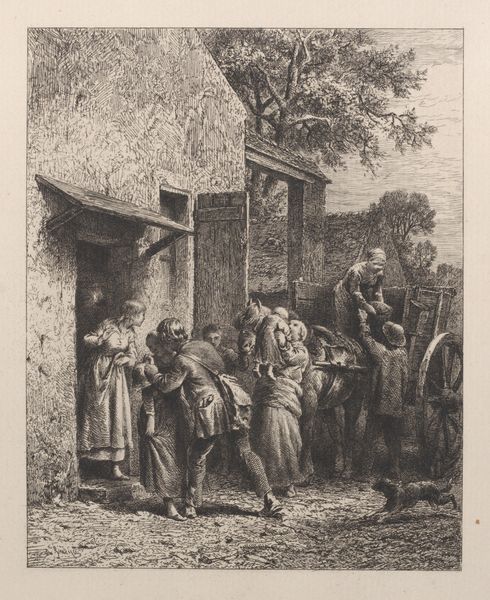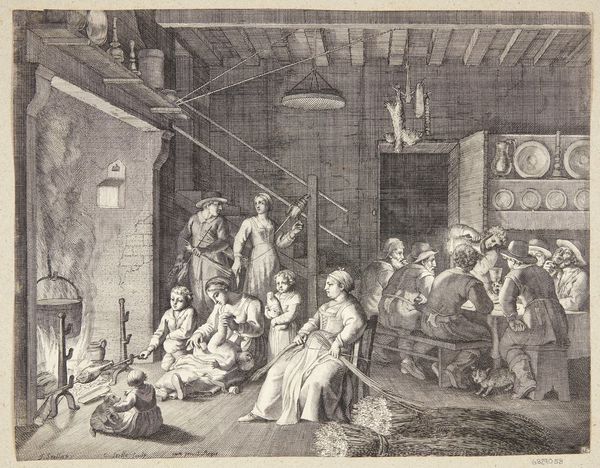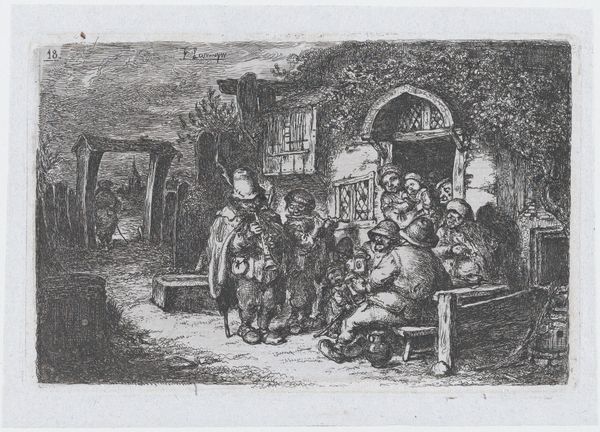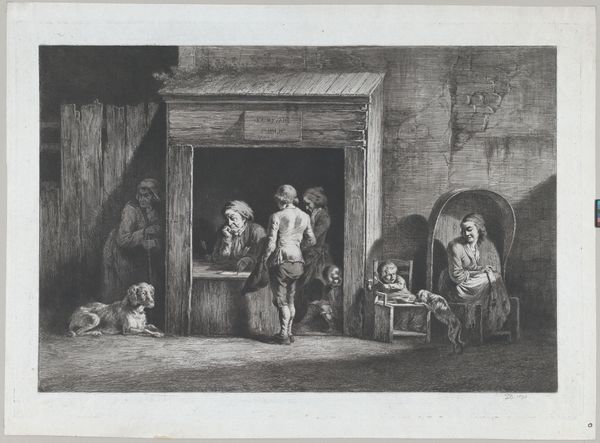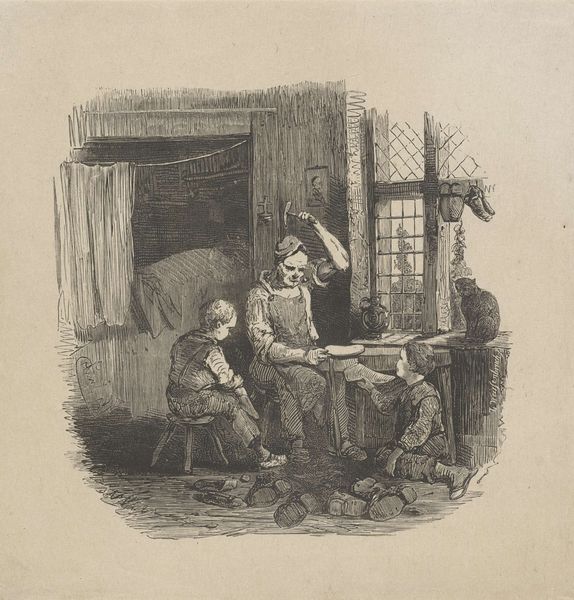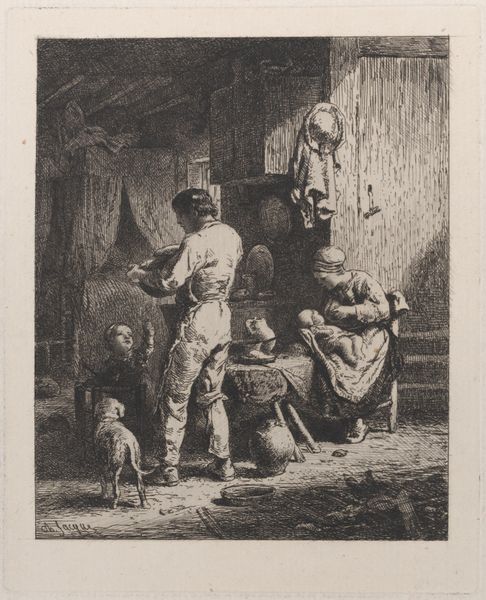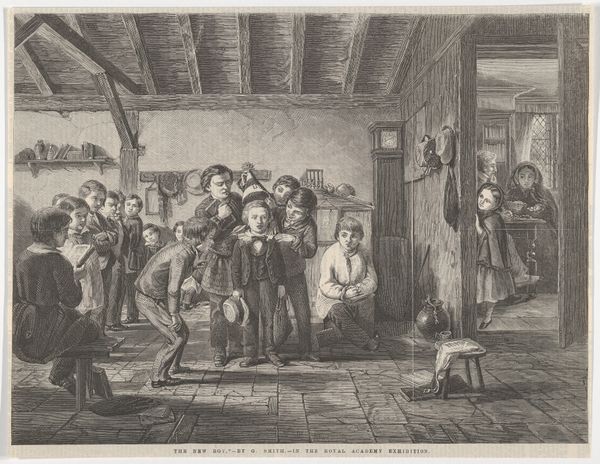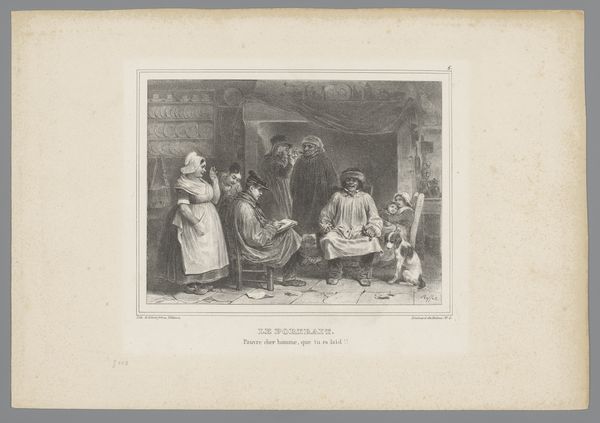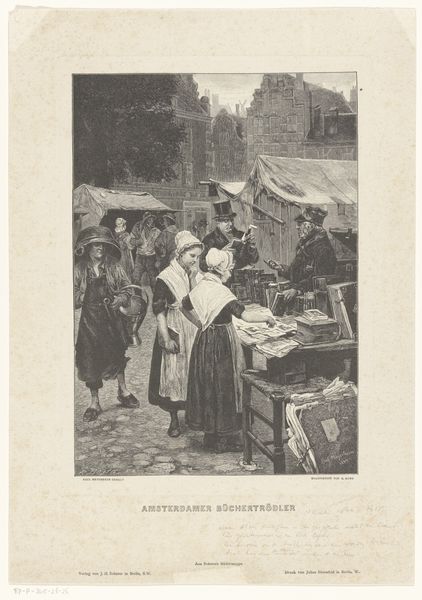
The Dame's Absence, from "Illustrated London News" 1857
Dimensions Image: 9 in. × 12 3/4 in. (22.8 × 32.4 cm) Sheet: 9 1/2 in. × 13 in. (24.2 × 33 cm)
Editor: Here we have "The Dame's Absence," a print made from etching, engraving, and woodcut by Harvey Orrin Smith in 1857 after A. Rankley's painting. The scene feels both chaotic and domestic, doesn’t it? All these children, seemingly unsupervised... What do you see in terms of its composition? Curator: Observe the clear dichotomy. Smith uses the open doorway as a threshold. On one side, we have the enclosed, somewhat darkened interior populated with figures. Conversely, the exterior beckons with light and linear perspective, drawing the eye down a clear path. Editor: So, it's not just about the children being rowdy while the teacher is away, but the stark contrast emphasizes their confinement? Curator: Precisely. Notice the interior's textures – the densely packed tableware, the wood grain, the varied textures of the children's clothing. Compare this intricacy with the garden's relatively simple rendering. What effect does that have? Editor: The interior feels claustrophobic compared to the openness of the garden. It’s almost as if they are trapped. But why use such distinct textures? Curator: The contrasting textures contribute to a visual hierarchy and intensify the spatial depth. It invites the viewer to examine and decode elements such as the textures, tones, and form. The narrative element takes a backseat. Editor: I hadn't considered it that way before, but focusing on how the techniques affect the mood does reveal more about the artwork than just its subject matter. Curator: Indeed. By observing such relationships, one gains insight into the aesthetic underpinnings and artistic intention. What might seem at first a genre scene reveals a more complex formal structure upon closer inspection.
Comments
No comments
Be the first to comment and join the conversation on the ultimate creative platform.
